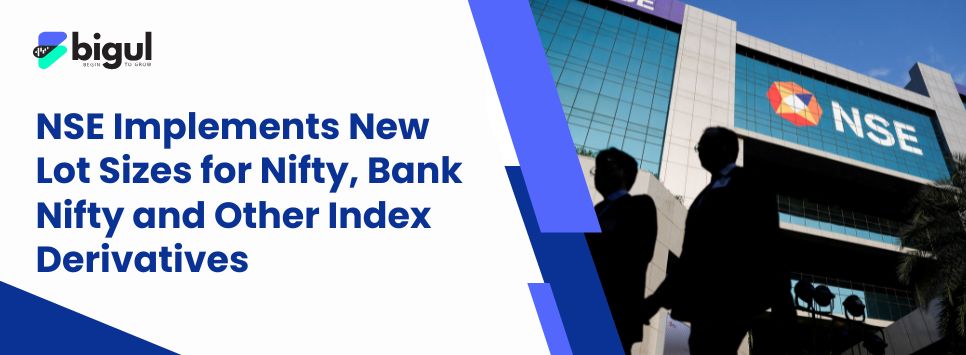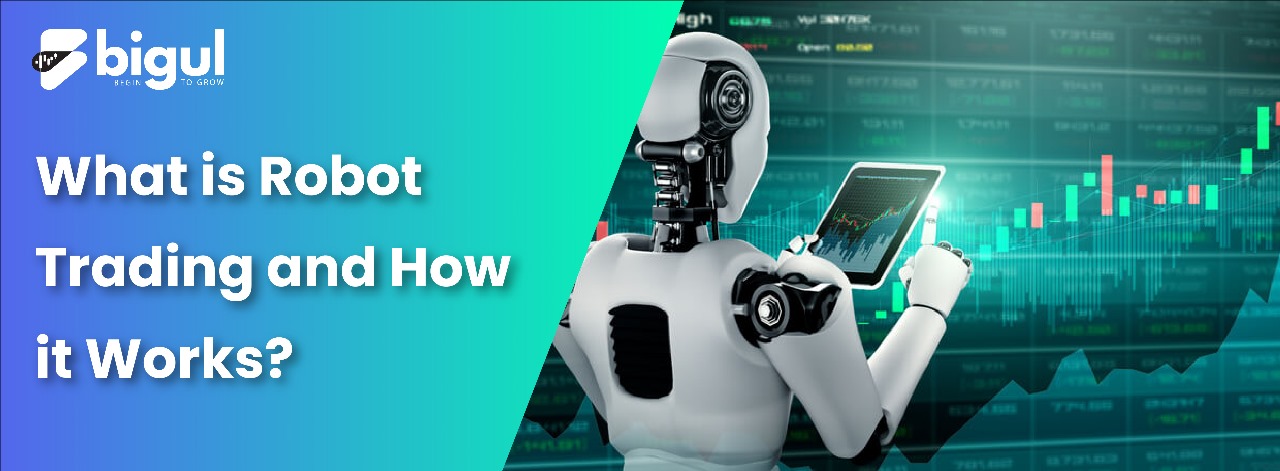Robot trading is also known as algorithmic trading or automated trading. It has emerged as a transformative force in the financial world. This innovative approach leverages advanced software programs to execute trades based on predefined criteria, effectively removing the need for human intervention.
As technology continues to advance, robot trading’s popularity has surged due to its potential to enhance trading efficiency, accuracy, and speed.
Understanding the mechanics of robot trading is essential in comprehending its impact on modern markets and the opportunities it presents for traders seeking a more systematic and disciplined approach to investing.
Also Read | Top Algo Trading Software for Beginners
What is Robot Trading?
Robot trading is commonly known as algorithmic trading. It involves the use of specialised software that many companies offer. It helps to execute trades on behalf of traders. These programs follow predefined instructions based on market data analysis, price trends, and other indicators.
The aim is to remove human emotion and errors, enabling faster trade execution and potentially more efficient profit generation in the dynamic world of forex trading.
Types of Robot Trading
Robot trading encompasses diverse strategies tailored to different market conditions and investor preferences. These strategies leverage automated systems to execute trades swiftly and efficiently. Here are some prominent types of robot trading:
- Trend-Following Robots: These robots identify and capitalise on prevailing market trends. They analyse historical price data and indicators to determine the direction of the market, aiming to enter trades in the direction of the established trend.
- Mean Reversion Robots: Mean reversion strategies are based on the idea that prices tend to revert to their historical averages over time. These robots identify overbought or oversold conditions and execute trades anticipating a return to the mean value.
- Arbitrage Robots: Arbitrage involves exploiting price discrepancies of the same asset on different exchanges or markets. Arbitrage robots quickly identify and capitalise on these price differentials, profiting from market inefficiencies.
- High-Frequency Trading (HFT) Robots: HFT robots execute a large number of trades within milliseconds, leveraging minimal price disparities. They capitalise on fleeting market opportunities that require split-second decision-making and ultra-fast execution.
- Statistical Arbitrage Robots: These robots utilise complex statistical models to identify relationships between different securities. By identifying deviations from historical correlations, they execute trades aiming to profit from these relationships converging back to their usual patterns.
- Sentiment Analysis Robots: Sentiment analysis robots monitor news, social media, and other sources to gauge market sentiment. They make trading decisions based on positive or negative sentiment around specific assets.
Advantages of Robot Trading
Robot trading offers several compelling advantages that have contributed to its increasing popularity among traders and investors. Here are some of the key advantages:
- Speed and Efficiency: Robots can execute trades in milliseconds, capitalising on rapid market movements and reducing delays.
- Data Analysis: Robots can process vast amounts of data and execute trades based on complex algorithms and patterns.
- 24/7 Trading: Robots can operate around the clock, taking advantage of global market opportunities.
- Backtesting: Strategies can be tested on historical data to refine and optimise performance before deployment.
- Consistency: Robots stick to a predetermined strategy, reducing variability in trading decisions.
- Diversification: Robots can simultaneously monitor and trade across multiple markets or instruments.
- Reduced Human Error: Automation reduces the risk of manual errors in trade execution.
- Monitoring Multiple Metrics: Robots can track various indicators and variables simultaneously.
- Time-Saving: Traders can focus on strategy development and monitoring rather than manual trading.
- Scalability: Robot strategies can be easily scaled up or down to manage different capital levels.
Robot Trading Strategies
Robot trading strategies involve the use of computer algorithms to execute trades in financial markets. These strategies use predefined rules and conditions to take advantage of market inefficiencies, patterns, and opportunities. Here are some common types of robot trading strategies:
- Trend Following: Trend following robot trading strategies analyse historical market data and indicators to identify prevailing trends. When a strong trend is detected, the algorithm automatically executes buy or sell orders in the direction of the trend. This approach aims to capitalise on sustained price movements. It is based on the assumption that trends tend to persist over a certain period, allowing traders to profit from the momentum.
- Arbitrage Opportunities: Executing an algorithmic strategy involves exploiting price differences of dual-listed stocks across markets, generating risk-free profit through simultaneous buying at a lower price in one market and selling at a higher price in another. Similarly, this approach can be extended to stocks and futures. Automated trading systems can unlock profitable arbitrage opportunities by efficiently identifying and capitalising on these discrepancies.
- Mean Reversion: Mean reversion strategies aim to profit from the tendency of asset prices to revert to their historical averages. Algorithms identify instances where prices have deviated significantly from their average values. By anticipating a corrective movement, the strategy triggers trades to capitalise on the expected price adjustment. This approach assumes that extreme price movements are temporary and prices will eventually return to their typical levels, providing profit opportunities.
Is Robot Trading Good for Traders?
Robots can be beneficial for trading as they execute trades based on predefined rules without emotional biases. They operate quickly, handle complex data, and can run continuously. However, success depends on the effectiveness of the strategy, proper risk management, and adaptability to changing market conditions.
Technical failures, unexpected events, and over-optimisation can pose risks.
Traders should have a solid understanding of algorithm design and financial markets and continuously monitor and refine their strategies to ensure robot trading’s long-term profitability.
Conclusion
Robot Trading is a smart way to invest in the stock market. It involves using computer programs, like India’s best algo trading software, to automatically execute trades based on predefined criteria. This technology saves time and reduces human error. As market data is analysed rapidly, trades are executed swiftly, aiming for better profits. Embracing this automated approach can offer investors a strategic edge in the complex trading world.
Also Read:
- Algo Trading: Revolutionising the Way We Trade and Invest
-
AI & Machine Learning: Catalysts for New Era in Algo Trading





.jpg)





.jpg)
